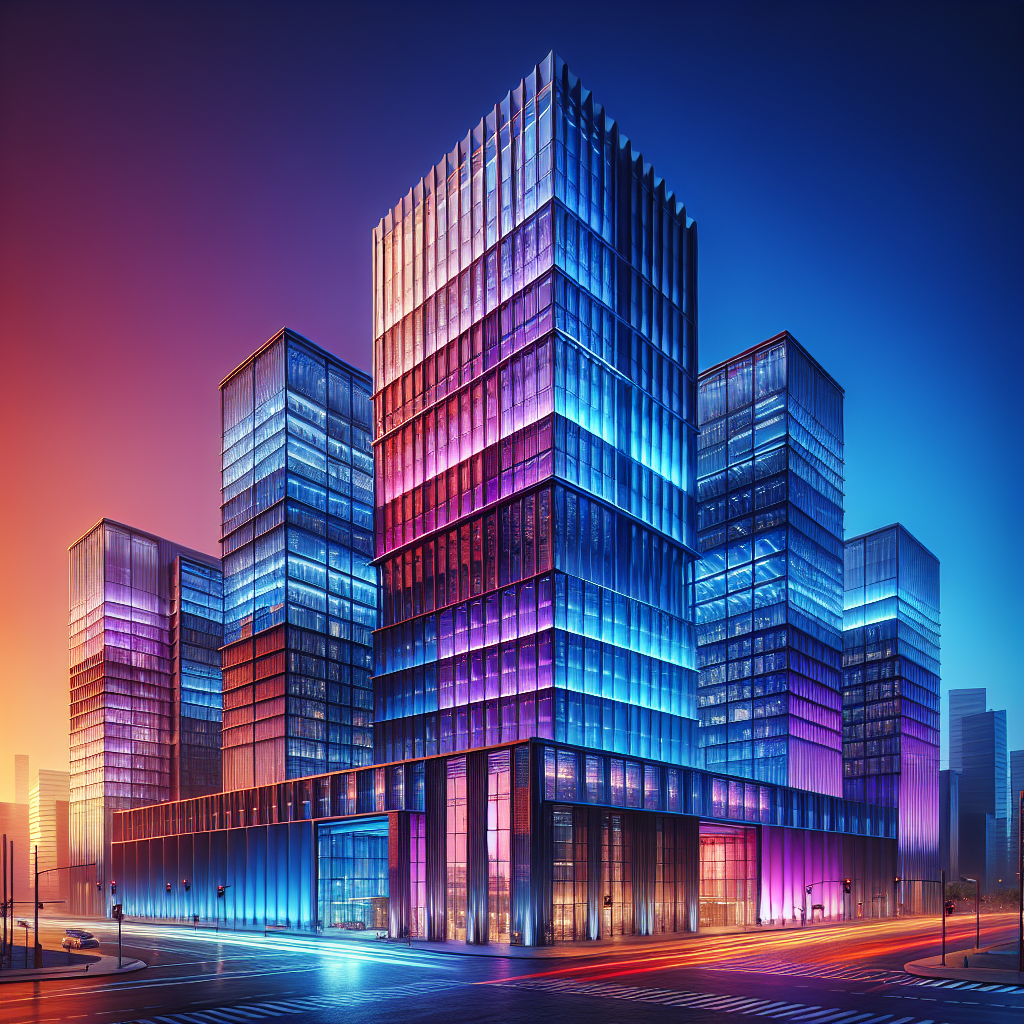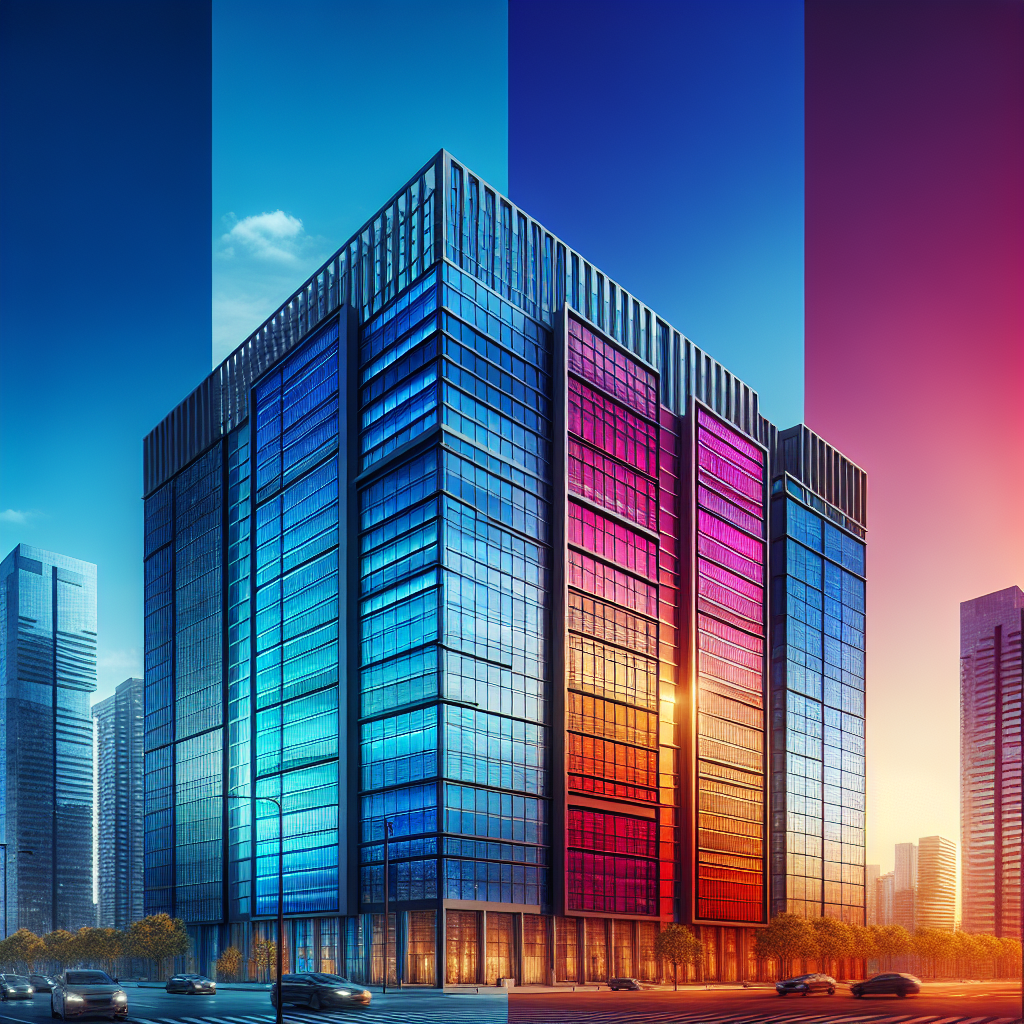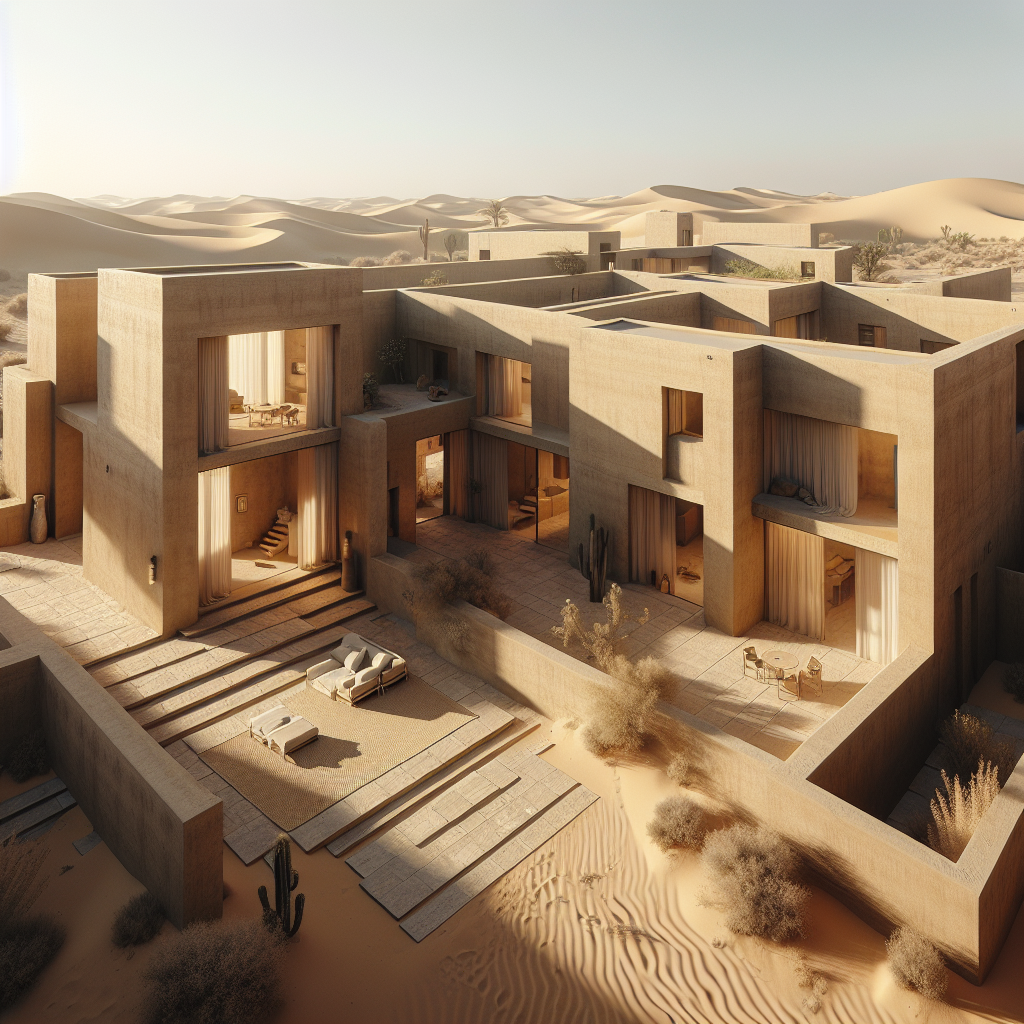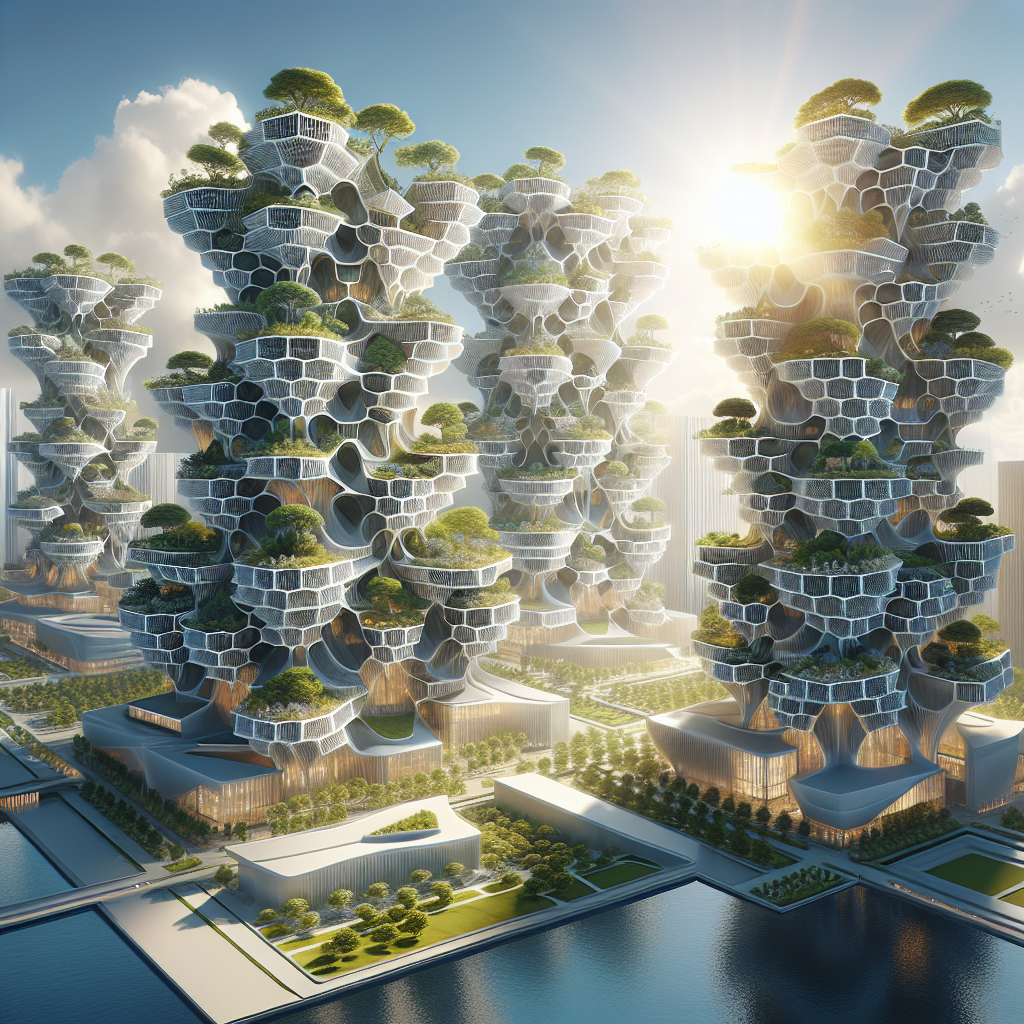Chromatic façade illusions: thermochromic paint morphing with temperature
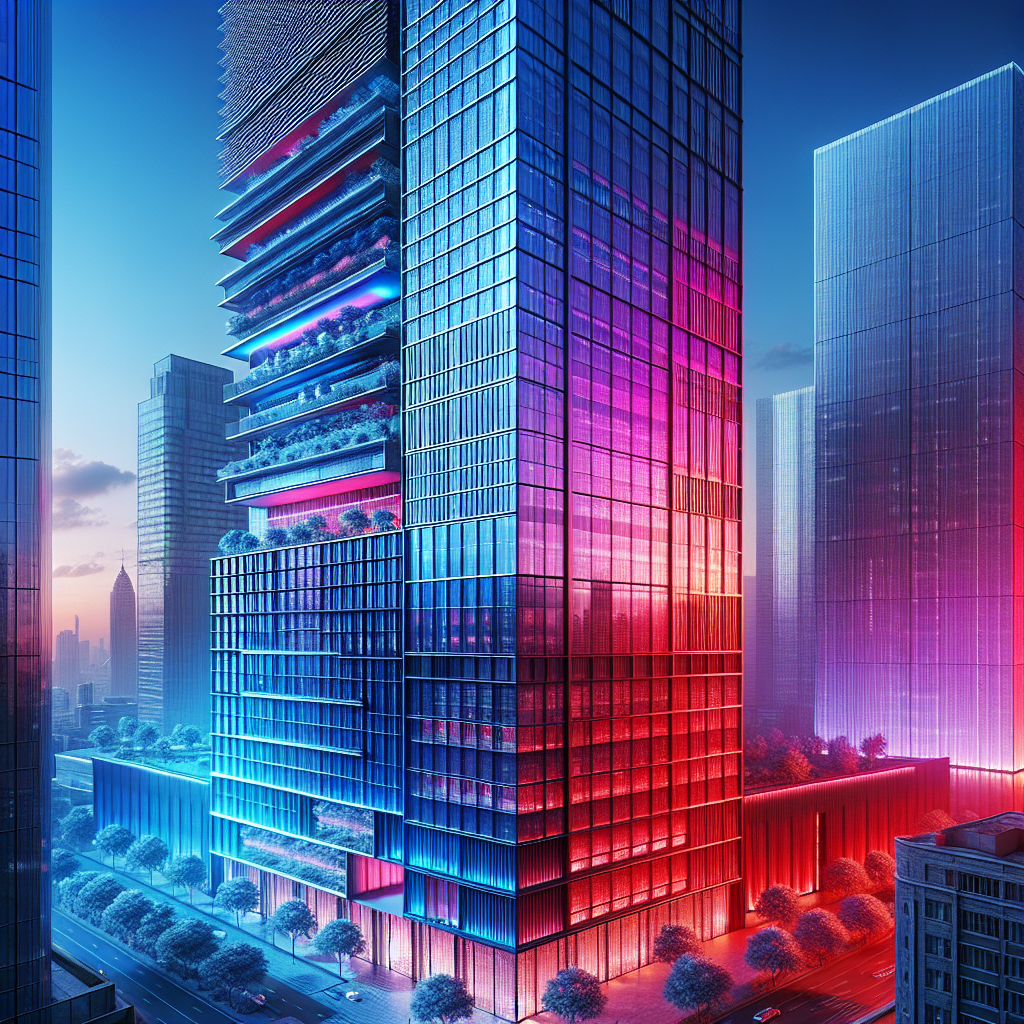
Chromatic Façade Illusions: Thermochromic Paint Morphing with Temperature
Imagine a building façade that subtly shifts from deep cobalt blue in the cool morning air to a vibrant crimson under the blazing midday sun, finally mellowing into a soothing lavender as twilight descends. This mesmerizing spectacle is no longer confined to the realm of speculative architecture or science fiction; it is a tangible reality, brought to life by the innovative use of thermochromic paint. This cutting-edge material, which alters its hue in response to temperature fluctuations, is redefining the aesthetic and functional possibilities of contemporary architecture, offering architects and designers an unprecedented palette of dynamic visual effects.
The Science Behind Thermochromic Paint
At its core, thermochromic paint contains pigments that respond to temperature changes by altering their molecular structure, thereby shifting color. These pigments are typically microencapsulated liquid crystals or leuco dyes, each offering distinct characteristics. Liquid crystals, for instance, produce a spectrum of iridescent hues, while leuco dyes provide a more dramatic, opaque color transition. According to Wikipedia’s comprehensive overview of thermochromism, these pigments can be precisely engineered to activate at specific temperature thresholds, enabling architects to tailor façade responses to local climatic conditions.
The implications of this technology extend beyond mere visual allure. Thermochromic façades actively contribute to building performance by modulating solar heat gain, enhancing energy efficiency, and reducing reliance on mechanical cooling systems. In an era where sustainable design is paramount, integrating thermochromic paint represents a significant stride toward environmentally responsive architecture.
Chromatic Narratives: Real-World Applications
One of the most striking examples of thermochromic paint application is the recently completed “Chroma Tower” in Dubai, designed by the visionary architecture firm Studio Morphosis. Rising majestically from the desert landscape, the tower’s façade is clad in thermochromic panels that shift from a serene turquoise in the cooler morning hours to a fiery coral as temperatures soar, mirroring the desert’s own dramatic color transitions. This dynamic interplay not only captivates observers but also serves as a visual indicator of external temperatures, subtly connecting occupants to their environment.
Similarly, the “Aurora Pavilion” in Stockholm, a collaborative project by renowned designers and material scientists, utilizes thermochromic paint to create an immersive sensory experience. Inspired by the ethereal hues of the Northern Lights, the pavilion’s façade transitions through a spectrum of blues, greens, and purples as temperatures fluctuate, offering visitors an ever-changing visual narrative that echoes the natural phenomena of its Nordic setting.
Architectural Expression and Identity
Beyond their functional benefits, thermochromic façades offer architects a profound means of expression, enabling buildings to convey narratives, reflect cultural identities, or respond dynamically to their surroundings. As discussed in our exploration of responsive architecture and kinetic façades, buildings that actively engage with their environment foster deeper connections with occupants and communities alike.
Incorporating thermochromic elements allows architects to design structures that are not static entities but living canvases, continuously evolving with the rhythms of nature. This dynamic quality resonates profoundly with contemporary design philosophies that prioritize adaptability, responsiveness, and experiential richness.
Sustainability and Energy Efficiency
Thermochromic façades also play a pivotal role in sustainable architecture by actively managing solar radiation. By shifting to lighter hues under intense sunlight, these façades reflect more solar energy, reducing heat absorption and lowering indoor temperatures. Conversely, darker shades during cooler periods absorb solar warmth, enhancing passive heating. This adaptive behavior significantly reduces energy consumption for heating and cooling, aligning with global sustainability goals and contributing to the pursuit of net-zero energy buildings, as detailed in our article on net-zero energy building design.
Moreover, thermochromic paints are increasingly formulated using eco-friendly, biodegradable materials, further enhancing their appeal as sustainable solutions. This commitment to environmental responsibility ensures that architectural innovations do not compromise ecological integrity.
Challenges and Considerations
Despite their remarkable potential, thermochromic paints present certain challenges that architects and designers must navigate. Durability and longevity under prolonged exposure to environmental stressors such as UV radiation, moisture, and temperature extremes remain critical considerations. Advances in material science, however, continue to enhance the resilience and lifespan of thermochromic coatings, promising broader applicability in diverse climatic contexts.
Additionally, architects must thoughtfully integrate thermochromic elements within broader design strategies, ensuring that dynamic color transitions harmonize with surrounding urban contexts and architectural aesthetics. Successful implementation requires meticulous planning, rigorous testing, and interdisciplinary collaboration among architects, material scientists, and environmental specialists.
The Future of Chromatic Façades
Looking ahead, the integration of thermochromic technology with other innovative design approaches promises exciting possibilities. Combining thermochromic paints with kinetic façades, for instance, could yield structures that simultaneously shift color and form, offering unprecedented levels of responsiveness and adaptability. As explored in our feature on biophilic design, such dynamic environments can profoundly enhance occupant well-being by fostering deeper connections with natural rhythms and cycles.
Moreover, emerging research into smart materials and nanotechnology suggests that future thermochromic coatings may offer even greater precision, durability, and functionality. Potential applications include façades capable of displaying intricate patterns, messages, or data visualizations, transforming buildings into interactive communication platforms that engage communities and enrich urban experiences.
Conclusion: A New Architectural Paradigm
Thermochromic paint represents more than a mere aesthetic novelty; it signifies a profound shift toward dynamic, responsive, and sustainable architecture. By embracing this innovative material, architects and designers can craft structures that actively engage with their environments, communicate meaningful narratives, and contribute positively to ecological sustainability. As thermochromic façades become increasingly prevalent, they promise to redefine our perceptions of architectural identity, functionality, and beauty, ushering in a vibrant new era of chromatic expression.
For further insights into how emerging technologies are reshaping architectural design, explore our analysis of technology’s impact on futuristic city design.
As we stand on the cusp of this chromatic revolution, the future of architecture appears brighter—and more colorful—than ever before.

